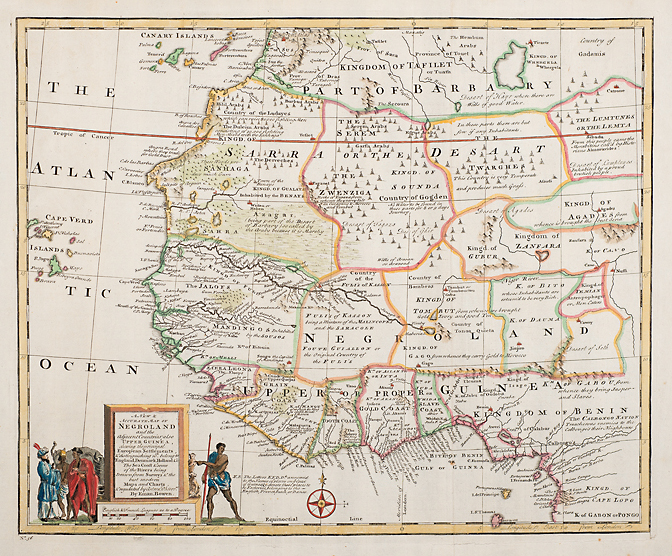Lucy Terry Prince
Where in the World?
WIREFRAME ONLY - NOT YET DESIGNED
Where in the World?
The Slave Trade in the Atlantic World

About
Beginning in the 1500s, millions of men, women, and children were enslaved and transported thousands of miles from their homes in Africa in the biggest forced migration in recorded history. Most enslaved people who survived the infamous Middle Passage from Africa to the Americas were condemned to lives of toil and incalculable misery on plantations in the Caribbean and South America, but as many as one million Africans were sold to enslavers in mainland North America, including New England. All the European powers competed for dominance, but the British controlled the biggest share of the lucrative Trans-Atlantic slave trade as it peaked in the mid-eighteenth century.
The Portuguese initially dominated the early (1500s) trans-Atlantic slave trade, but Spain successfully challenged the Portuguese monopoly by contracting directly with European merchants who wanted access to the profitable market in enslaved people. Spain’s dominance did not last, however, as England and other European countries founded West India Companies in the 1600s to develop their own direct connections to the trade in Africa. When the trans-Atlantic slave trade reached its trafficking peak in the 1700s, the British were the largest carriers of enslaved Africans across the Atlantic.
Africa seemed to 18th-century slave traders and their planter customers to have an inexhaustible population of people to enslave. By the 1700s, African men women and children were being captured far inland and were then transported to the coast where they were sold to European traders in exchange for manufactured goods, rum, and gold. This 18th century map identifies the main trading areas on the West African coast and extensive coastal settlements, including those in East Guinea occupied by European traders and slavers. The map includes locations of the forts called “factories”, or “slave castles” along the Guinea coast owned by various countries, such as England’s Cape Coast castle and Elmina Castle in present-day Guyana that was controlled first by the Portuguese and then the Dutch. Denmark set up the trading fort of St. Christiansborg on the Guinea coast in the 1660s, chartered the Danish West India Company in 1671 and occupied the Danish Antilles (today’s U.S. Virgin Islands.)
Most slave ships set sail from July to September in an attempt to avoid the rainy season off the African coast when many sailors would die of fever and other diseases. Ships’ Captains would not leave the West African coast, however, until they had purchased a full cargo of captives which could take 3-4 months.